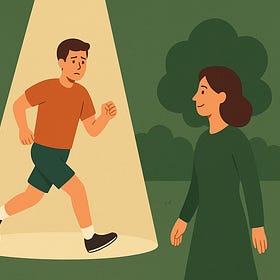Beginner’s Guide to Running
Easy steps to start running, stay consistent, and improve fitness
How to Start Running with No Experience
If you’re motivated to start running, you’re already halfway to success. The next step is focusing on a few simple things that will keep you consistent. Many beginners stop too soon because they ignore the essentials. Here’s a practical guide if you’re ready to bring your fitness to the next level.
Start small
This is advice I give about almost everything. It is the most important principle when starting something new.
When you run for the first time, your body experiences a new kind of physical stress. Your face may turn red. Your lungs will burn. Breathing will feel heavy. These things can kill your motivation quickly unless you start short. Running just 2 km is enough for your body to adapt.
Run a maximum of 2 km (about 1.2 miles) at first, even if you feel you could go longer
Increase the volume weekly with 1 km
Run as slowly as possible. You should be able to hold a conversation. Yes, that slow
Wear good shoes
It is not necessary to buy the most expensive pair. Proper running shoes will support and protect your body. The key feature is cushioning. It absorbs the impact and keeps vibrations from traveling through your muscles and bones, which can cause long-term damage.
Invest in a proper pair of running shoes
Focus on cushioning to avoid injuries
Expect to get about 600 km out of one pair
Nice shoes make running more enjoyable
Example: Nike Pegasus 41
With proper shoes, the next step is to monitor how you run to stay consistent and avoid overexertion.
Track your performance to slow down
At first, I thought beginners didn’t need this. But I changed my mind. Tracking is not only about pushing harder. It is also about holding yourself back.
When I run without my watch, I almost always go too fast. Other runners influence my pace, and I end up exhausted. Tracking helps you slow down and stay consistent. Your pace should be 6 to 7 minutes per kilometer, which is 9:40 to 11:22 minutes per mile.
Use Strava or Adidas Running to track your pace
Slow down if you are too fast
Do not let your ego react when someone passes you. This is your run
Small steps and high cadence
Most beginners do not think about how they run. You do not need to obsess over technique, but one thing is worth learning early: take smaller steps with a higher cadence.
This keeps your foot landing under your body instead of in front. It reduces pressure on your knees and avoids tightening your hamstrings.
Remember smaller steps are better
Quick tip: Watch this YouTube short
Once your technique is comfortable, it’s important to plan when and how often you run.
Schedule your runs
Life gets busy and sport is usually the first thing we cut. To make running stick, you need a plan.
At first, just pick two days a week. Run for maximum 30 minutes and keep the schedule consistent so it becomes a habit. I always put my runs in my calendar. That way, there is no excuse.
Use a calendar to block running time
Keep your running shoes ready by the door
Pick fixed days such as Monday and Saturday
Drink electrolytes
Hydration is obvious, but sweating also drains electrolytes such as sodium, potassium, magnesium and calcium. Missing these minerals can cause early fatigue, cramps, headaches and even heart palpitations.
You can buy ready-made drinks online or make your own with mineral water, orange juice, sugar and sea salt.
Drink electrolytes before and after your run
Both store-bought and homemade options work
Example: Hydraid Hydration Helper
Stretch
I used to ignore stretching and paid the price. Sore and tight muscles that could take a week to recover. Running on stiff muscles also raises your risk of injury. Even a short five-minute stretch after your run is enough to loosen muscles and reduce injury risk.
Take 5 minutes to stretch after running
It helps recovery and prevents injuries
Quick routine: Stretching video
If you want to improve your cardiovascular health, gain more energy, and actually enjoy running, stick to these basics. They will make your journey smoother and more sustainable.
Start small, stay consistent, and enjoy the journey. Along the way, running might teach you more than just fitness.
Read More:
Lame! – The Digital Critic in Your Head
For a long time, I didn’t recognize the app’s effect on me, and as a result, I never truly found myself.
From Anxiety to Freedom: Overcoming the Spotlight Effect
I’m Everyone’s Target – How I Learned to Be in the Spotlight






I'm a beginner runner so this is solid advice! Also checking out the shoes you recommended.